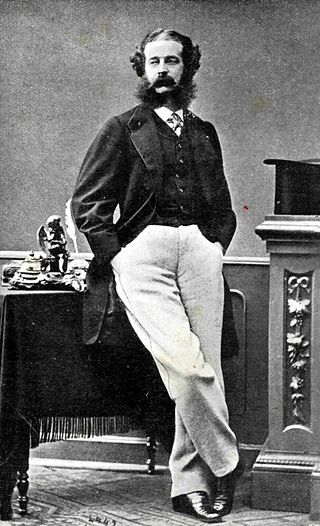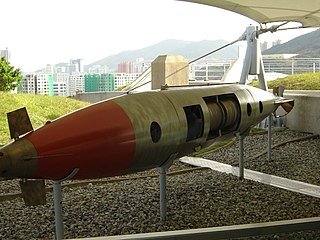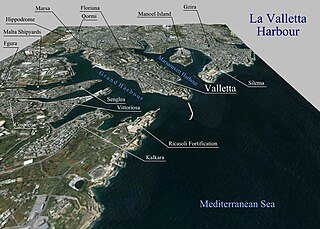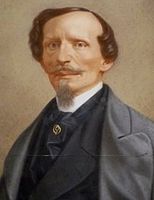
A Chianti wine is any wine produced in the Chianti region of central Tuscany. It was historically associated with a squat bottle enclosed in a straw basket, called a fiasco. However, the fiasco is only used by a few makers of the wine as most Chianti is now bottled in more standard shaped wine bottles. In the mid-late 19th century, Baron Bettino Ricasoli helped establish Sangiovese as the blend's dominant grape variety, creating the blueprint for today's Chianti wines.

Bettino Ricasoli, 1st Count of Brolio, 2nd Baron Ricasoli was an Italian statesman. He was a central figure in the politics of Italy during and after the unification of Italy. He led the Moderate Party.

Urbano Pio Francesco Rattazzi was an Italian statesman.

The Accademia di Belle Arti di Firenze is an instructional art academy in Florence, in Tuscany, in central Italy.

Agostino Depretis was an Italian statesman and politician. He served as Prime Minister of Italy for several stretches between 1876 and 1887, and was leader of the Historical Left parliamentary group for more than a decade. He is the fourth-longest serving Prime Minister in Italian history, after Benito Mussolini, Giovanni Giolitti and Silvio Berlusconi. Depretis is widely considered one of the most powerful and important politicians in Italian history.

Emilio, marquis Visconti-Venosta was an Italian statesman. He is one of the longest-serving Ministers of Foreign Affairs in the history of Italy.

The Brennan torpedo was a torpedo patented by Irish-born Australian inventor Louis Brennan in 1877. It was propelled by two contra-rotating propellers that were spun by rapidly pulling out wires from drums wound inside the torpedo. Differential speed on the wires connected to the shore station allowed the torpedo to be guided to its target, up to 2,000 yards (1,800 m) away, at speeds of up to 27 knots (31 mph).

The Chamber of Deputies is the lower house of the bicameral Italian Parliament. The two houses together form a perfect bicameral system, meaning they perform identical functions, but do so separately. The Chamber of Deputies has 400 seats, of which 392 will be elected from Italian constituencies, and 8 from Italian citizens living abroad. Deputies are styled The Honourable and meet at Palazzo Montecitorio.

Kalkara is a village in the South Eastern Region of Malta, with a population of 3,014 as of March 2014. The name is derived from the Latin word for lime (Calce), and it is believed that there was a lime kiln present there since Roman times. Kalkara forms part of the inner harbour area and occupies the area around Kalkara Creek. The town has its own Local Council and is bordered by the cities of Birgu and Żabbar, as well as the town of Xgħajra.

Fort Ricasoli is a bastioned fort in Kalkara, Malta, which was built by the Order of Saint John between 1670 and 1698. The fort occupies a promontory known as Gallows' Point and the north shore of Rinella Bay, commanding the entrance to the Grand Harbour along with Fort Saint Elmo. It is not only the largest fort in Malta but also the largest in Europe, and it has been on the tentative list of UNESCO World Heritage Sites since 1998, as part of the Knights' Fortifications around the Harbours of Malta.

The Grand Harbour, also known as the Port of Valletta, is a natural harbour on the island of Malta. It has been substantially modified over the years with extensive docks, wharves, and fortifications.

La Nazione is one of the oldest regional newspapers in Italy, and was established on 8 July 1859. The paper is based in Florence.

The history of Chianti dates back to at least the 13th century with the earliest incarnations of Chianti as a white wine. Today this Tuscan wine is one of Italy's most well known and recognizable wines. In the Middle Ages, the villages of Gaiole, Castellina and Radda located near Florence formed as a Lega del Chianti creating an area that would become the spiritual and historical "heart" of the Chianti region and today is located within the Chianti Classico Denominazione di Origine Controllata e Garantita (DOCG). As the wines of Chianti grew in popularity other villages in Tuscany wanted their lands to be called Chianti. The boundaries of the region have seen many expansions and sub-divisions over the centuries. The variable terroir of these different macroclimates contributed to diverging range of quality on the market and by the late 20th century consumer perception of Chianti was often associated with basic mass-market Chianti sold in a squat bottle enclosed in a straw basket, called fiasco.
General elections were held in Italy on 10 March 1867, with a second round on 17 March. Before the elections, Bettino Ricasoli resigned as Prime Minister due to a disagreement with the Chamber; the Chamber disapproved of his agreements with the Vatican regarding the repatriation of certain religious properties. These snap elections resulted in Urbano Rattazzi being elected once again to office.

The Froberg mutiny was a mutiny within the British armed forces staged between 4 and 12 April 1807 at Fort Ricasoli, on the island of Malta, then a British Protectorate, by the Froberg Regiment. The regiment had been formed using dubious methods, with personnel recruited from various nationalities in Albania and the Ottoman Empire. The troops, who had arrived on Malta in 1806, were unhappy with their rank and pay. The mutiny lasted for eight days, during which several people were killed and the fort was damaged. The mutiny was put down, and the ringleaders were executed. It is considered the most serious mutiny of the Napoleonic Wars.

The French invasion of Malta was the successful invasion of the islands of Malta and Gozo, then ruled by the Order of St. John, by the French First Republic led by Napoleon Bonaparte in June 1798 as part of the Mediterranean campaign of the French Revolutionary Wars.

The Rattazzi I government of Italy held office from 3 March 1862 until 8 December 1862, a total of 280 days, or 9 months and 5 days.

The Ricasoli II government of Italy held office from 20 June 1866 until 10 April 1867, a total of 294 days, or 9 months and 21 days. It was also known as the Government of National Reconciliation, because it led Italy during the Third War of Independence.

The Minister of War of Italy, was the minister responsible for the Ministry of War and the Royal Italian Army. The position was abolished with the creation of the position for Minister of Defence.
















